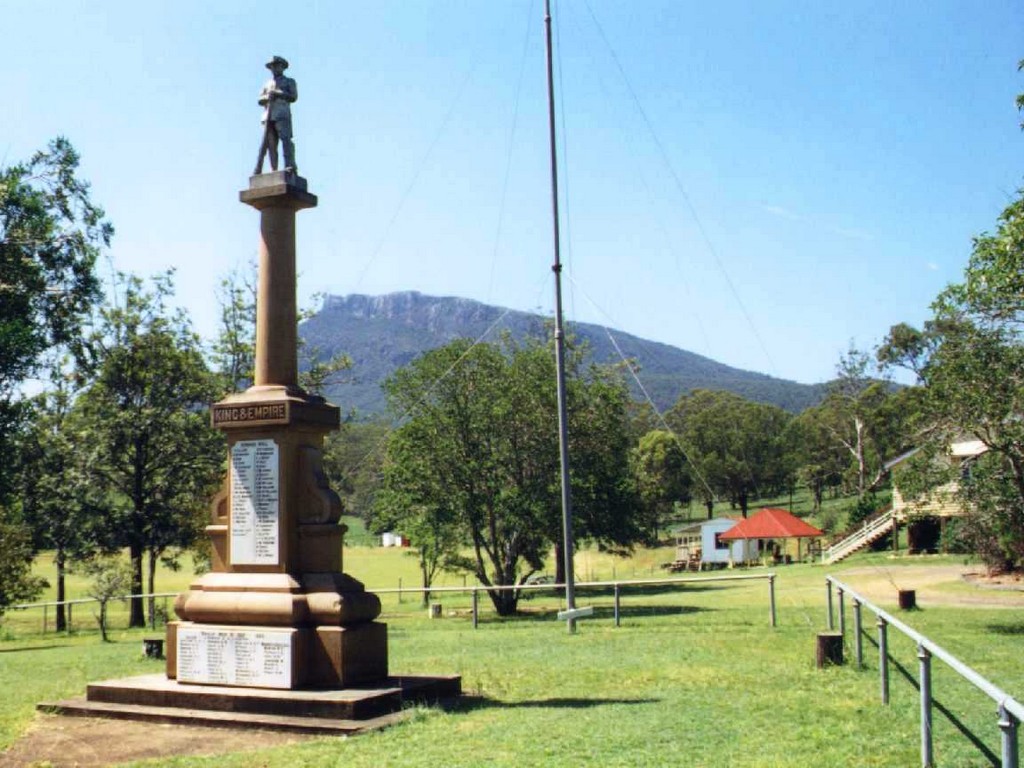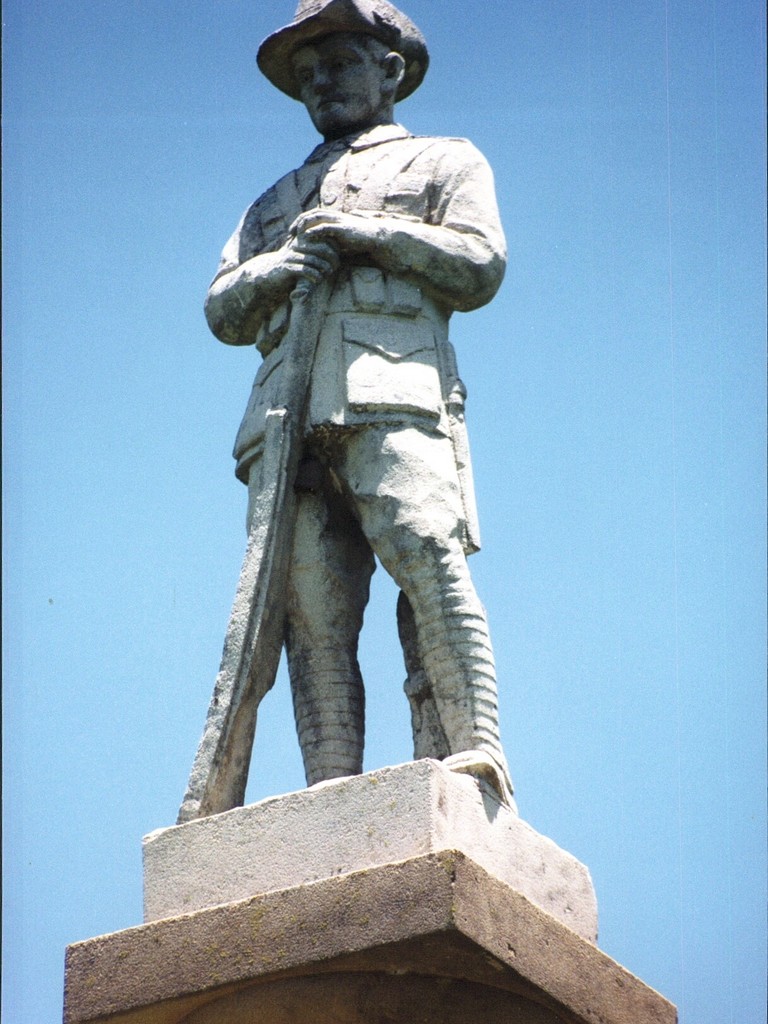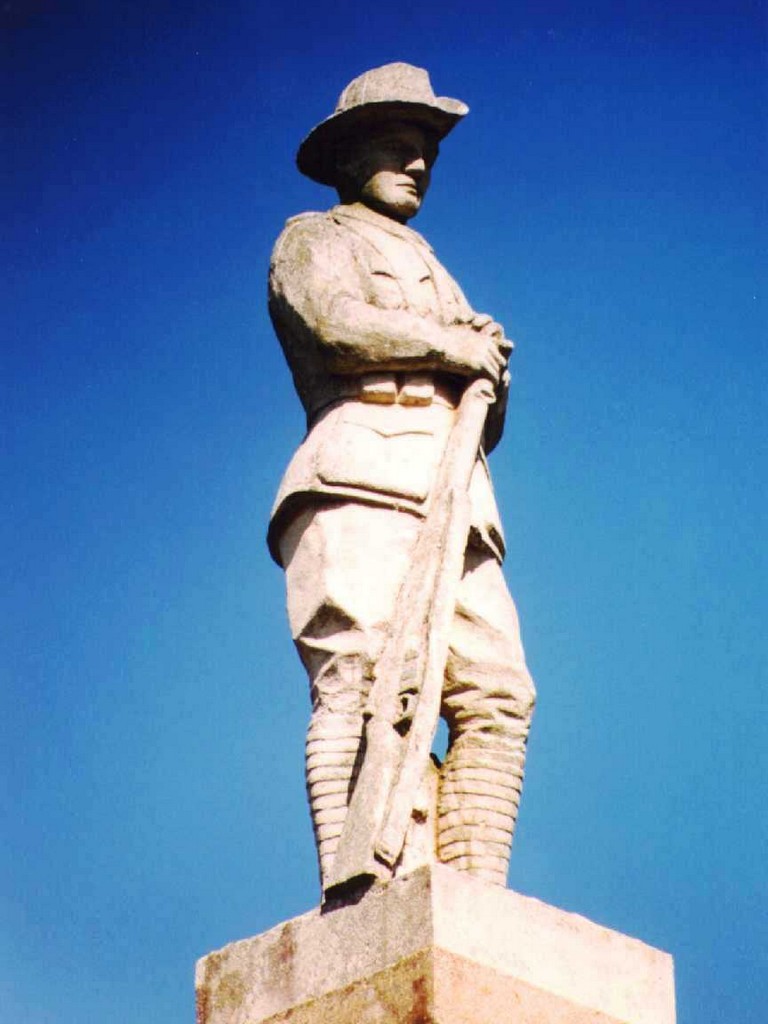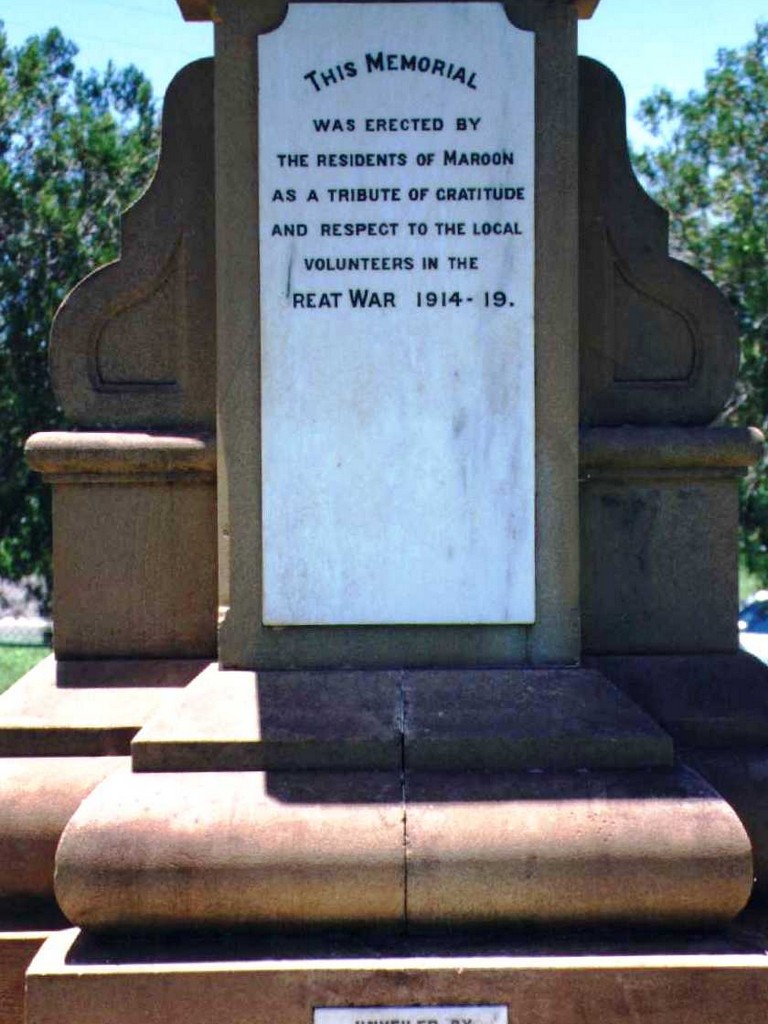- Home
- Maroon War Memorial (Digger)
/
Maroon War Memorial (Digger)
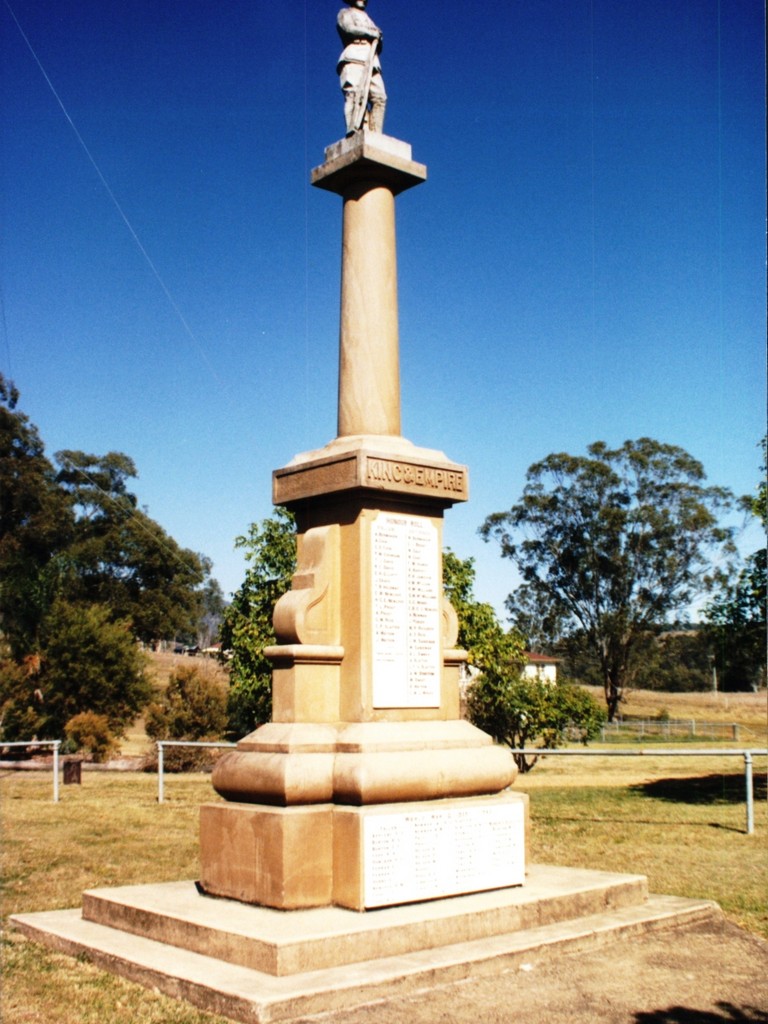
Share
Memorial information
Description
The Maroon War Memorial is located within a small enclosure just inside the grounds of Maroon State School. The memorial is a tall structure comprised of a sandstone pedestal, column and Digger statue, resting on a stepped concrete plinth.
The sandstone pedestal is substantial. It has a two-tiered base on which rests a narrower 4-sided shaft with decorative flanking scrolls. Tall marble plaques are attached to the front (north) and back (south) faces of the shaft. The front plaque contains an honour roll bearing the names of the 42 local men who served in World War One. Beneath this, on the lowest tier of the pedestal, is another plaque bearing the names of the 42 local men and women who served in World War Two. The plaque on the back face of the shaft bears the inscription: This memorial was erected by the residents of Maroon as a tribute of gratitude and respect to the local volunteers in the Great War 1914-19.
Attached to the lowest tier of the pedestal, on separate faces, are two small oblong marble plaques with the inscriptions: Unveiled by General Sir William Birdwood, May 21, 1920 and: Time capsule placed 21-9-91 commemorating the Maroon State School centenary 1891-1991. With the exception of the latter, the other commemorative inscriptions are leaded.
Above the pedestal a small plinth with the carved lettering King & Empire on the front face supports a tall, plain column which in turn supports the statue of an Australian infantry soldier or digger, standing at ease in a pose favoured by sculptor Frank Williams in his war memorial digger statues. A carved tree stump immediately behind the left leg, often seen in soldier figure memorials, appears to be a structural device to give stability to the standing figure. The statue is life-like but slightly smaller than life-size.
Within the enclosure there is a concrete path leading toward the memorial and some tree plantings. Two small but mature trees, possibly Cupressus sp., flank the path and frame the approach to the memorial. Pines or Cypresses traditionally are associated with First World War memorials, symbolising the August 1915 battle of Lone Pine Ridge, one of the most savage in the Gallipoli campaign.
A tall metal flagstaff is located directly behind the memorial, within the enclosure. A perimeter fence of extruded galvanised iron pipe has replaced an earlier timber fence and is not of cultural heritage significance. Mt Maroon towers in the distance to the southeast and forms a dramatic visual background to the memorial.
(Source: Queensland Cultural Heritage Register)
Inscription
'This memorial was erected by the residents of Maroon as a tribute of gratitude and respect to the local volunteers in the Great War 1914-19.'
Unveiled by General Sir William Birdwood, May 21, 1920 and 'Time capsule placed 21-9-91 commemorating the Maroon State School centenary 1891-1991'. With the exception of the latter, the other commemorative inscriptions are leaded.
King & Empire
Conflicts
World War I, World War II
Memorial type
Statue
Contributions
Shirley and Trevor McIvor
Geoff Whittet, Secretary, Boonah RSL Sub Branch
Share
Photos

